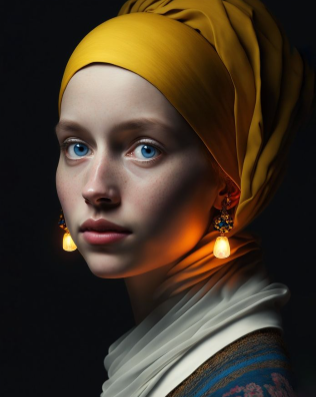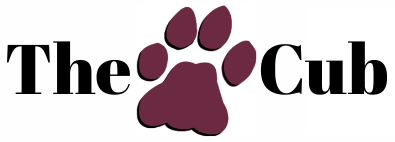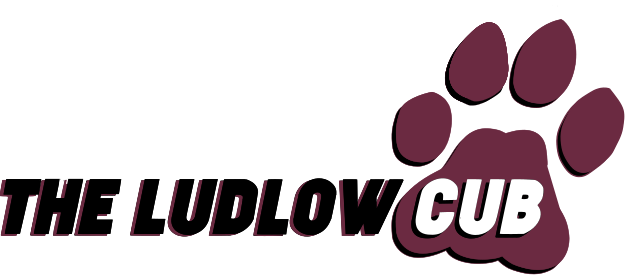
The definition of art expressed by the Oxford Dictionary is, “The use of the imagination to express ideas or feelings, particularly in painting, drawing or sculpture.” Many people consider art to be something that you create with paints, pencils, clay, or even scraps of miscellaneous items to create something new. The craft doesn’t come easy and takes numerous years for artists to improve their skills to perfection. However, what happens when AI software scours the internet, takes aspects of original artwork, and merges them into one franken-image in a matter of seconds? Do you find it fascinating or dystopian?
How it’s Done
The algorithm used to generate the images on software like Dall-E and Stable Diffusion uses “aesthetics” to generate their images. Cited from the American Scientist article, AI is Blurring the Definition of Artist, “To create AI art, artists write algorithms not to follow a set of rules, but to “learn” a specific aesthetic by analyzing thousands of images. The algorithm then tries to generate new images in adherence to the aesthetics it has learned.” Following a specific aesthetic generated by the software creates images that would be the most related to the prompt given by the user. An aesthetic can be characterized by beautiful photos such as landscapes, works of art, and photography.
Using these aesthetics to generate art can either be passable as a work of original art or Painstakingly obvious which is one of the major flaws of such a technology. For example, if you have ever seen variations of AI art circulating the internet you can get an idea of what’s good and what’s plain rubbish.
How is AI Art Used?
How is AI art utilized in business ventures? Companies nowadays have opted to use AI for marketing or promotional messages for their work and it’s definitely caused a stir in modern ethics of replacing the artist with a machine.
How can an artist keep up with a speedy engine? Artists like Greg Rutkowski, known for his commercial illustrations in the gaming industry, described his experience of his name and illustrations being sampled in an AI software producing in his art style. In his interview with Forbes magazine, AI Is Coming For Commercial Art Jobs. Can It Be Stopped? He describes his thoughts on the ordeal. “‘I’m very concerned about it,’ said Rutkowski. ‘As a digital artist or any artist, in this era, we’re focused on being recognized on the internet.
Right now, when you type in my name, you see more work from the AI than work that I have done myself, which is terrifying for me. How long till the AI floods my results and is indistinguishable from my works?’”
Having his artwork be overtaken by non-original works inspired him and put him at ill-ease of what was to come in the later future. Having an AI take “inspiration” from his work and using it to craft a faux piece has affected his motivation and marketability. If a computer can imitate and replicate paintings, drawings, and any sort of art, will artists soon all be replaced by AI?
The Legality of AI Art
What can be done with AI art legally? What is allowed and what is not? Well for starters, AI-generated content cannot be copyrighted since it isn’t considered a work of human creation. In Wired’s article, “Why This Award-Winning Piece of AI Art Can’t Be Copyrighted,” An AI art piece titled, Théâtre D’opéra Spatial, by Matthew Allen, won an award at Colorado’s State Fair. Allen submitted his art piece to be copyrighted by The Copyright Office administration and was promptly rejected. The office chose to reject the piece because “It’s too much ‘machine’ and not enough ‘human.’” Art is only allowed to be copyrighted if it follows the criteria of copyright laws, and being made by a human is a key component.
Knowing this, Allen continued to fight for the copyright by describing his continuous efforts of altering and putting in different prompts for the computer to generate the painting. It still did not convince the copyright office’s mind.
But on the positive side for business ventures, since AI is unable to be copyrighted it can be used for commercial purposes. This makes the idea of using AI art for personal creative purposes seem useless.
Personal Opinions from Artist
With all these ideas of AI replacing forms of art, it begs the question, what do professional artists have to say about this new technology? Brett Smith, an art teacher at Ludlow High School, described the internet as a place where there is a need to make similar things. He references the mere exposure effect as a key component of art being replicated in the media.
The mere exposure effect is a psychological phenomenon that occurs when you look at the same thing repeatedly over a period of time and gradually like that thing because of its familiarity. Mr. Smith correlates this phenomenon with AI art for its ability to replicate popular works of art. With this in mind he thinks that AI art is the new forthcoming technology that comes with newer forms of art.
Mr. Smith has described that the AI art he had seen being used mostly was in marketing for selling clothing and making fake photorealistic models. Smith predicts that with this new technology, a considerable amount of jobs could be taken from artists.

